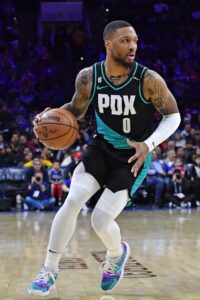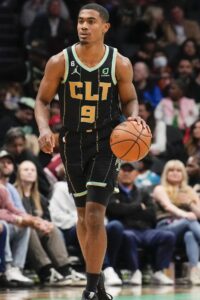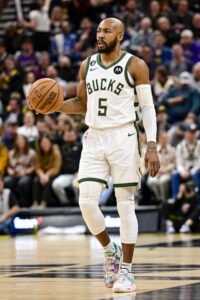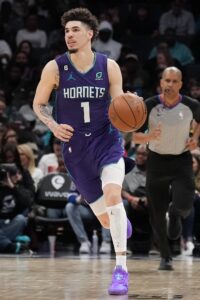The NBA salary cap is somewhat malleable, with various exceptions allowing every team to surpass the $136,021,000 threshold once their cap room is used up. In some cases, teams blow past not only the cap limit, but the luxury tax line of $165,294,000 as well — the Clippers, Warriors, and Suns are among the clubs that project to have massive tax bills this season as a result of their spending.
The NBA doesn’t have a “hard cap” by default, which allows clubs like L.A., Golden State, and Phoenix to build a significant payroll without violating NBA rules. However, there are certain scenarios in which teams can be hard-capped.
The league’s new Collective Bargaining Agreement has carried over the hard cap rules from the 2017 CBA while also expanding them, adding new scenarios in which teams can face hard caps and creating a second salary level that certain teams can’t exceed. These rules will continue to evolve in 2024/25, since they’re being implemented over the course of two years.
In 2023/24, the guidelines are as follows:
- A team becomes hard-capped at the first tax apron ($172,346,000) if it makes any of the following moves:
- Acquires a player via sign-and-trade.
- Uses the bi-annual exception.
- Uses more than the taxpayer portion (up to two years, with a starting salary of $5MM) of the mid-level exception.
- Takes back more than 110% of the salary it sends out in a trade (when over the cap).
- A team becomes hard-capped at the second tax apron ($182,794,000) if it uses any portion of the mid-level exception.
Over half of the NBA’s teams have been willing to hard-cap themselves so far in 2023/24. Some teams will have to be hyper-aware of that hard cap when they consider any roster move for the rest of the season, but for others it’s just a technicality that won’t affect their plans in any meaningful way.
Listed below are the hard-capped teams for the 2023/24 league year, along with how they created a hard cap. In some instances, a team made multiple moves that would have imposed a hard cap (ie. acquired a player via sign-and-trade and used the bi-annual exception) — only the first of those transactions is noted below.
Hard-capped at first tax apron
These teams will be prohibited from exceeding $172,346,000 in team salary.
Brooklyn Nets
- Used non-taxpayer mid-level exception on Jalen Wilson.
Charlotte Hornets
- Took back more than 110% of Terry Rozier‘s outgoing salary via trade.
Chicago Bulls
- Used non-taxpayer mid-level exception on Jevon Carter.
Cleveland Cavaliers
- Acquired Max Strus via sign-and-trade.
Dallas Mavericks
- Acquired Grant Williams via sign-and-trade.
Detroit Pistons
- Took back more than 110% of Isaiah Livers‘ outgoing salary via trade.
Houston Rockets
- Acquired Dillon Brooks via sign-and-trade.
Indiana Pacers
- Took back more than 110% of the combined outgoing salary of Bruce Brown, Kira Lewis, and Jordan Nwora via trade.
Los Angeles Lakers
- Used non-taxpayer mid-level exception on Gabe Vincent.
Memphis Grizzlies
- Used non-taxpayer mid-level exception on Bismack Biyombo and Vince Williams.
Minnesota Timberwolves
- Used non-taxpayer mid-level exception on Shake Milton and Troy Brown.
New Orleans Pelicans
- Used non-taxpayer mid-level exception on E.J. Liddell.
New York Knicks
- Used non-taxpayer mid-level exception on Donte DiVincenzo.
Oklahoma City Thunder
- Took back more than 110% of Patty Mills‘ outgoing salary via trade.
Philadelphia 76ers
- Took back more than 110% of Marcus Morris‘ outgoing salary via trade.
Portland Trail Blazers
- Took back more than 110% of the combined outgoing salary of Jusuf Nurkic, Nassir Little, and Keon Johnson via trade.
San Antonio Spurs
- Took back more than 110% of Doug McDermott‘s outgoing salary via trade.
Toronto Raptors
- Used bi-annual exception on Jalen McDaniels.
Utah Jazz
- Took back more than 110% of Ochai Agbaji‘s outgoing salary via trade.
Washington Wizards
- Took back more than 110% of Danilo Gallinari‘s outgoing salary via trade.
Hard-capped at second tax apron
These teams will be prohibited from exceeding $182,794,000 in team salary.
Denver Nuggets
- Used taxpayer mid-level exception on Reggie Jackson.
This list, which could continue to grow, will be updated throughout the 2023/24 league year as necessary. It can be found anytime in the “Hoops Rumors Features” menu on the right-hand sidebar of our desktop site, or in the “Features” menu on our mobile site.

 Lillard and Harden asked their respective teams to move them right around the start of free agency, but nearly three weeks later, it doesn’t appear that there’s been a whole lot of movement on either front.
Lillard and Harden asked their respective teams to move them right around the start of free agency, but nearly three weeks later, it doesn’t appear that there’s been a whole lot of movement on either front. When superstars like
When superstars like 
 Chicago Bulls
Chicago Bulls New York Knicks
New York Knicks Extensions, of course, don’t involve adding a new player to the roster. By extending a contract, a team ensures that a current player will remain locked up for multiple years to come. Although a contract extension may not change the club’s outlook on the court, it can have a major impact on that team’s salary cap situation for the next several seasons.
Extensions, of course, don’t involve adding a new player to the roster. By extending a contract, a team ensures that a current player will remain locked up for multiple years to come. Although a contract extension may not change the club’s outlook on the court, it can have a major impact on that team’s salary cap situation for the next several seasons.